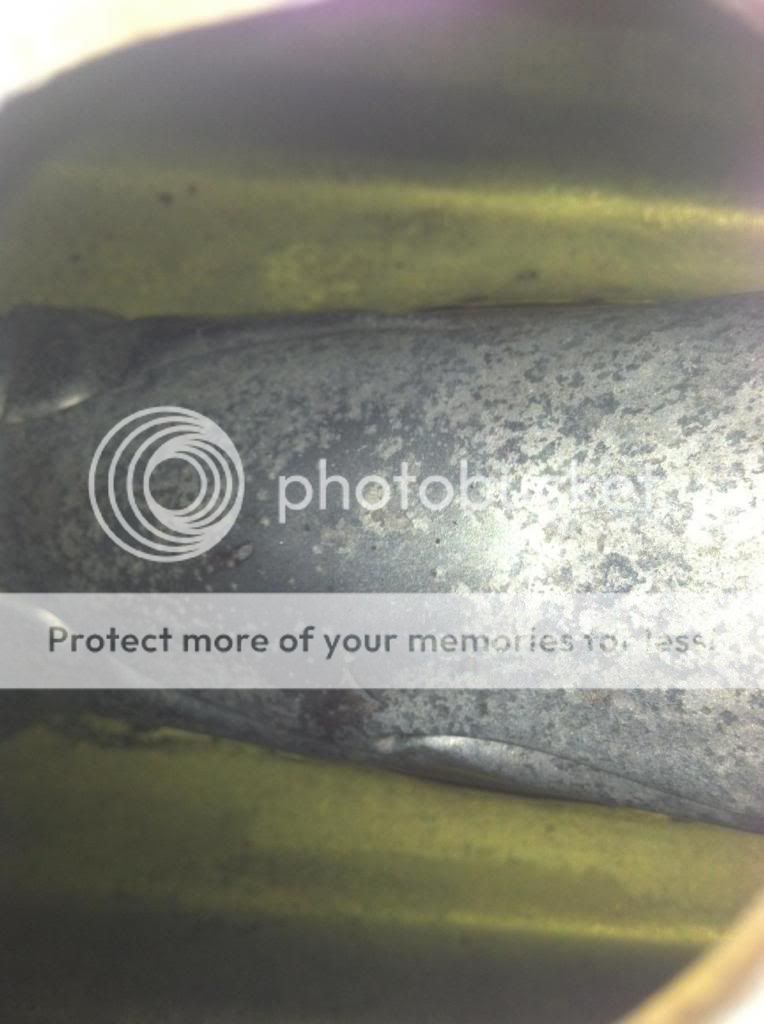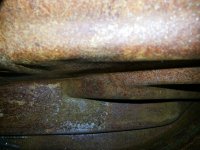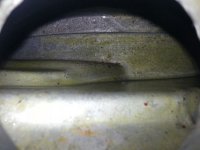RealSaltBlake
Active Member
I recently acquired a new tank for my 1971 Kawasaki G3SSA and the whole inside had surface rust. So I went with the vinegar route (cheaper) to get it clean and it worked brilliantly!
The steps are as follows:
1. Remove the petcock and secure the bottom with tape. Make sure it is done enough to hold liquid.
2. Put nails or screws in a dry tank and shake it around to break up the loose rust. After shaking it on and off for a while pour out the loose dust and the nails/screws.
3. Pour in white vinegar to the brim, tighten the cap, and let it sit for 48 hours.
4. Remove all but about a gallon of vinegar and put the nails/screws in and shake it around for a few minutes.
5. Pour out the vinegar and nails/screws.
6. Rinse out the tank with a hose and swish around the water.
7. Pour out the water.
8. Immediately after pouring out the water, pour in about 40 oz of Coca Cola and swish it around.
9. Pour out the Coca Cola.
10. Rinse out the Coca Cola by adding in about a half gallon of gas and about 250mL of two stroke motor oil and mixing it around to make sure you coat the whole tank.
11. Pour out the gas and two stroke oil mix.
12. Pour in mineral spirits (denatured alcohol) and shake it around.
13. Pour out mineral spirits.
I will also add that you want to be fairly quick when pouring out and pouring in the different liquids. I did not get any flash rust using this method. We also had 100% humidity and I still didn't get any flash rust.
Hope this helps anyone looking to cheaply clean the inside of a tank.
Here is the result:
(About a half gallon of gas is inside)

The steps are as follows:
1. Remove the petcock and secure the bottom with tape. Make sure it is done enough to hold liquid.
2. Put nails or screws in a dry tank and shake it around to break up the loose rust. After shaking it on and off for a while pour out the loose dust and the nails/screws.
3. Pour in white vinegar to the brim, tighten the cap, and let it sit for 48 hours.
4. Remove all but about a gallon of vinegar and put the nails/screws in and shake it around for a few minutes.
5. Pour out the vinegar and nails/screws.
6. Rinse out the tank with a hose and swish around the water.
7. Pour out the water.
8. Immediately after pouring out the water, pour in about 40 oz of Coca Cola and swish it around.
9. Pour out the Coca Cola.
10. Rinse out the Coca Cola by adding in about a half gallon of gas and about 250mL of two stroke motor oil and mixing it around to make sure you coat the whole tank.
11. Pour out the gas and two stroke oil mix.
12. Pour in mineral spirits (denatured alcohol) and shake it around.
13. Pour out mineral spirits.
I will also add that you want to be fairly quick when pouring out and pouring in the different liquids. I did not get any flash rust using this method. We also had 100% humidity and I still didn't get any flash rust.
Hope this helps anyone looking to cheaply clean the inside of a tank.
Here is the result:
(About a half gallon of gas is inside)








